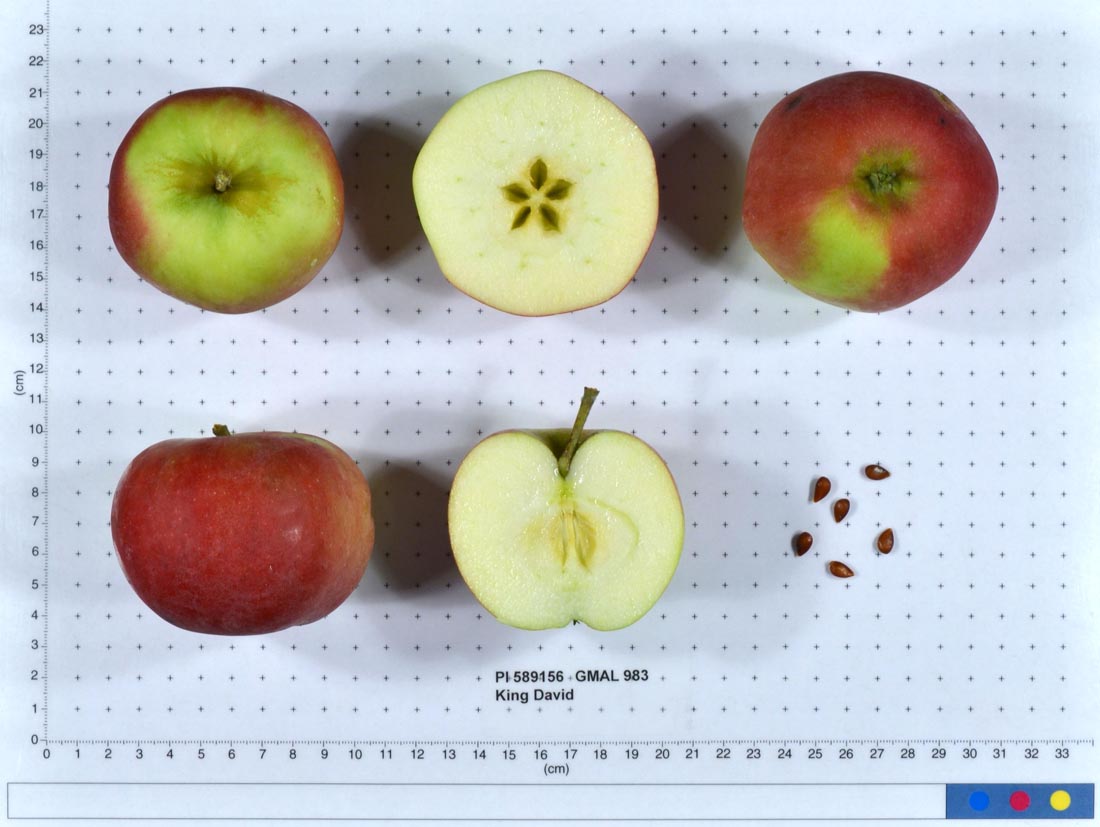Pomiferous
Welcome to the world's most extensive apples (pommes) database.
Information on over 7,000 apples is available here, all carefully researched and provided in a way that is easy to navigate.
King David

type: Cider, Eating, Pie, Sauce
identification: Medium size, round tending to conic, Vaguely ribbed at the stem end. Skin is pale green over which is deep red covering most or all of the fruit and even darker broken stripes. An abundance of white flecking over the whole apple. The stem is medium in length and slender and set in a deep, narrow, russetted cavity.
characteristics: Flesh is yellowish, firm, crisp and juicy. Tough skin and coarse texture, though it softens in storage. Flavour is slightly sweet, slightly tart, spicy and cidery, reminiscent of the Winesap. For best flavour, pick when the red covers most of the apple, but avoid leaving it too long on the tree since it is prone to developing water core. In storage, they often develop a waxy skin.
uses: A complex, hard-cider apple. Eaten fresh, pie and sauces as well as cider. Cooked, it takes on a rich, yellow colouring. Makes a superb apple strudel.
origins: Found as a wild seedling along a fence row on the farm of Ben Frost in Washington County, Arkansas (U.S.A.), in 1893. While it is generally agreed that the flower parent was a Jonathan , the pollen parent is speculated to be either an Arkansas Black or a Winesap . It was introduced by Stark Brothers Nursery of Missouri in 1902.
cultivation: Moderately vigorous, spreading with a tendency to go brushy. Tolerates humid climate and needs warm autumns to fully ripen. Fruit holds well on the tree. Hardy zones 5 to 9. The apple will colour up before being fully ripe and so is often picked too early as a rather tart fruit
cold storage: Keeps two months in cold storage.
vulnerabilities: Resistant to blight, scab, mildew and rust.
harvest: Ready for harvest in the second half of the fifth period.
pollination group: C
pollination peak: 10
ploidism: Diploid. Self sterile.
cold storage weeks: 8
harvest period: 5
hardiness: 5
Donate a cider?
©2016-2021 Pomiferous.com. All rights reserved